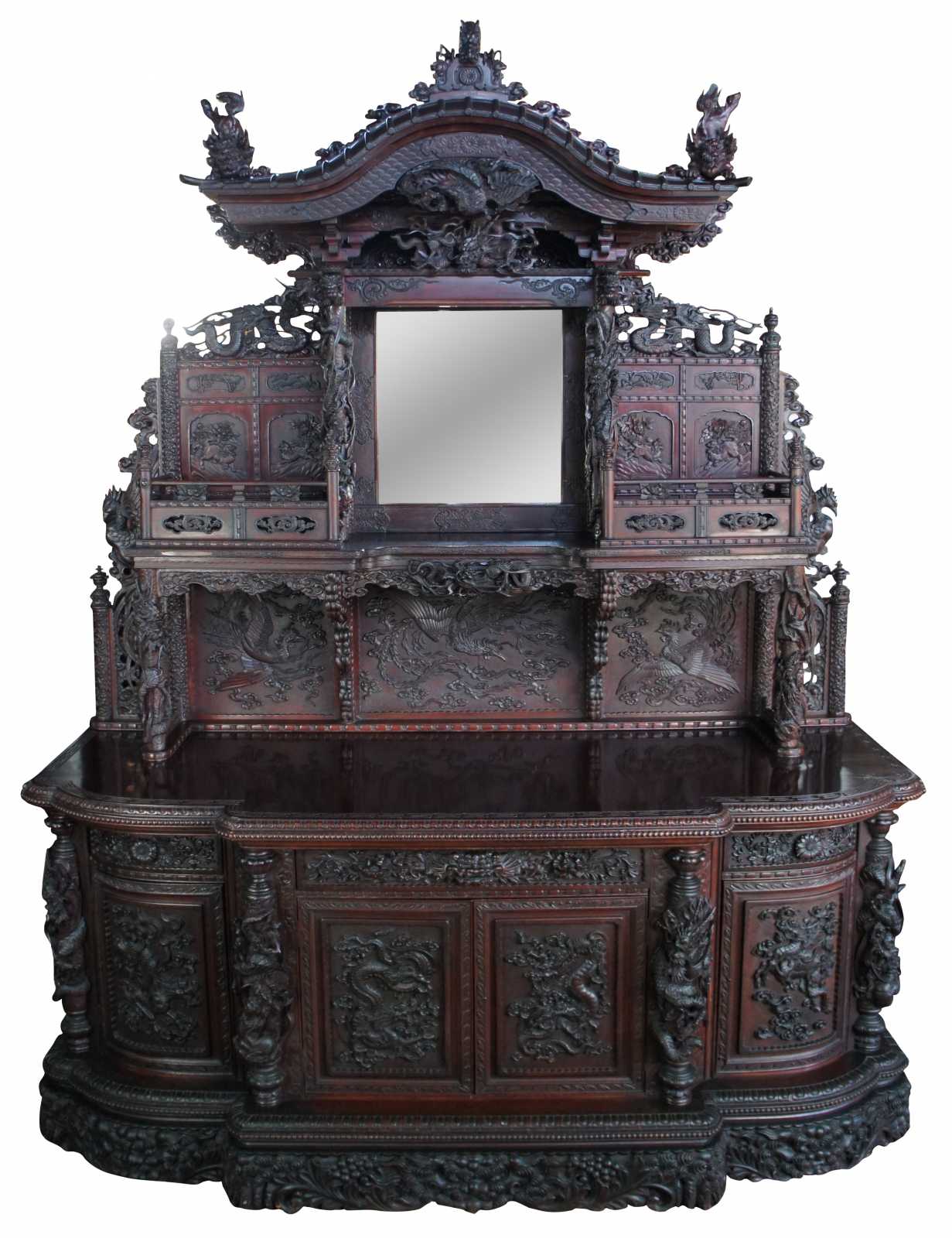
Shipping:
Free Shipping Included
Delivery:
Estimated 2-15 Business Days
Payments:
Credit Card, Check, Cash, PayPal, Apple Pay, Venmo
Returns:
30 Days 100% Money Back Guarantee, Buyer Pays Return Shipping
Description
Important 19th C. Japanese Meiji Period ornately carved extreme high relief, credenza or bar back. Meticulously designed with one of a kind tooling. A breakfront form with three drawers over lower cabinets, topped by a hutch with shelves and central mirror. Features a dragon or serpent theme, phoenix's, elephants, foo dogs and pierced foliate placed throughout. Amongst the animals is the Imperial (Mons) seal of Japan or Chrysanthemum, emblazoned along drawer handles and within scenes, Charismatic 3-D carvings ordain all surfaces with robust columns at the forefront. Aprons are accented by beading, gadrooning and Japanese Greek key. The pagoda form crown is topped by an intriguing dragon looking down over a chrysanthemum medallion while holding the crown of the cabinet in its mouth. Flanked by two spectacular guardian lions. A masterpiece that would have been made for and limited to a member of the Royal Family/ Imperial House of Japan.
The chrysanthemum flower, "Kiku" or the "Jirogiku" is the national emblem or crest of Japan. It is associated with the royal family and the imperial household. It represents longevity, as well as health and restoration. The chrysanthemum is also seen as a symbol of rejuvenation. First introduced by the Chinese during the Nara dynasty in 710, the royal family took a liking to the simple flower and retained it as their own symbol. As the imperial symbol of Japan, it is always depicted with 16 petals. It is also a reference to the head of state and seen as a symbol of the throne of the Emperor of Japan or "chrysanthemum throne". During the Meiji period, no one was allowed to use the chrysanthemum as their seal aside from the emperor of Japan. This lead to other family members of the Royal Family creating slight variations of it, which is why a 14-petaled version can also be seen sometimes on certain objects and furniture. Today the flower remains popular, a symbol of immortality that is commemorated every year at the festival of Happiness.
Provenance :
Great House in Britain, acquired in the 1970s
Condition
Good antique condition, wear and distressing commensurate with age and use, marking / rubbing, warping, past repairs / missing trim, splitting / separation
Dimensions
85" x 30" x 106"h, surface 36"
You May Also Like